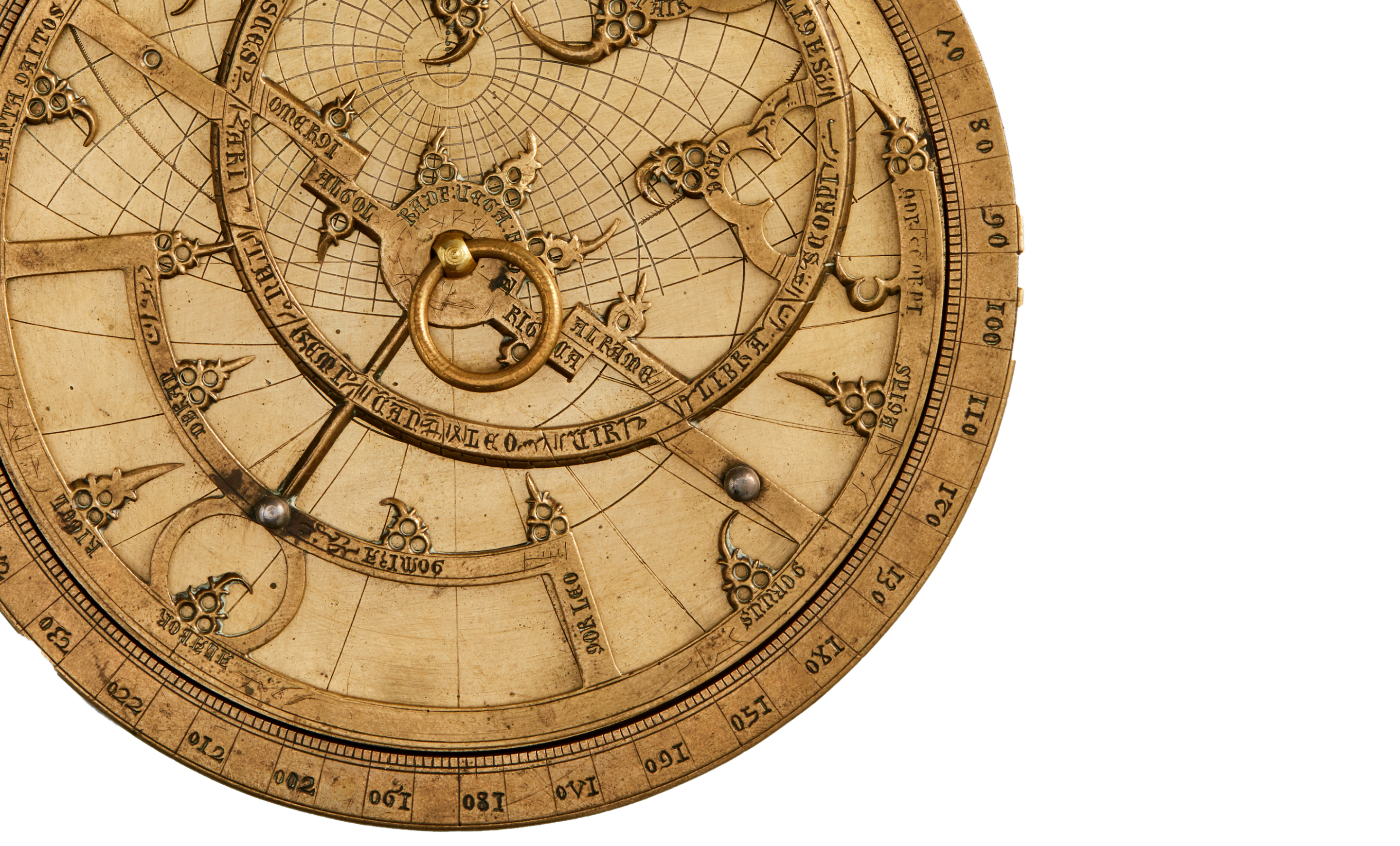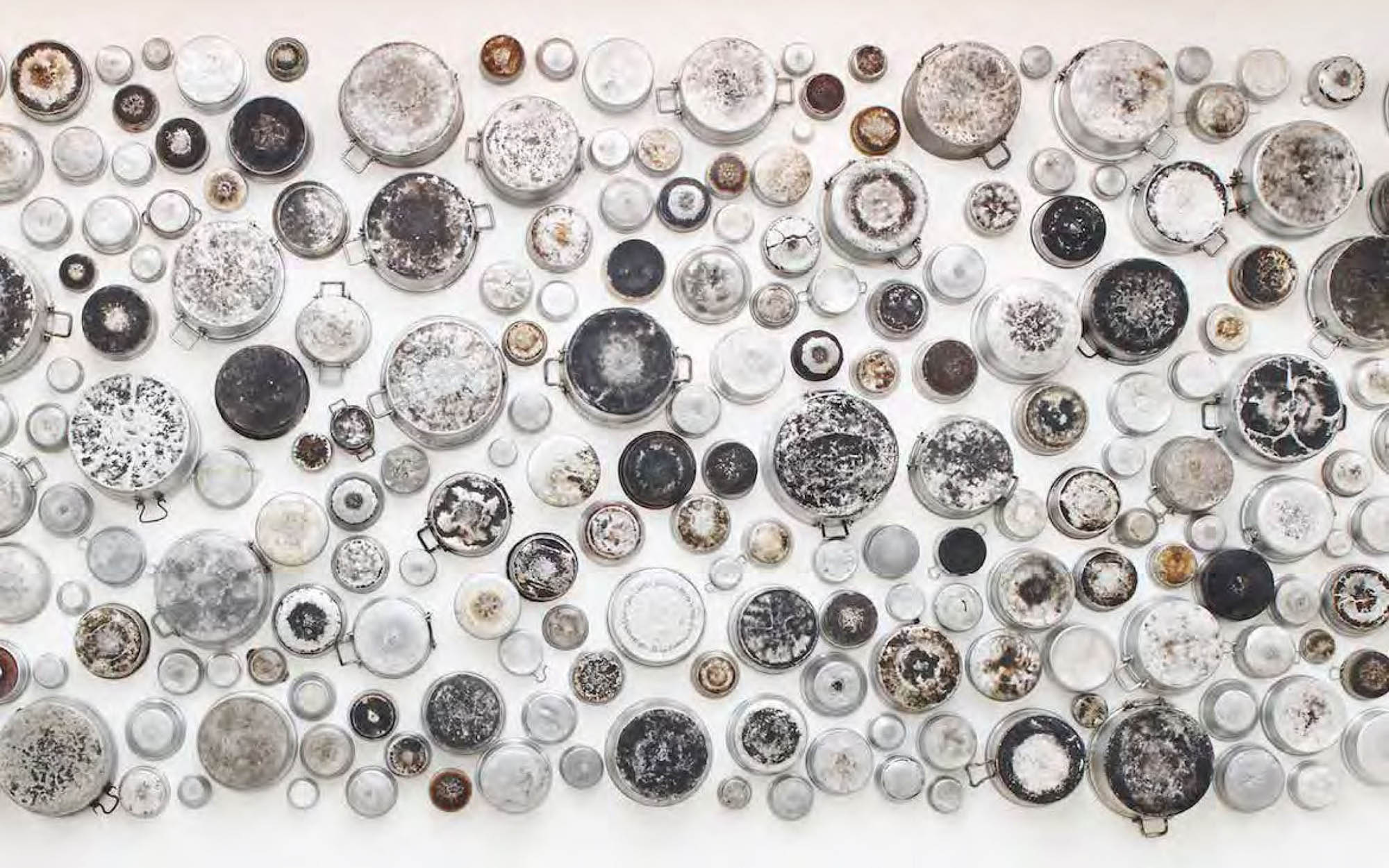Precious travel companion: The Astrolabe
Planispheric Astrolabe Spain (Historic Al-Andalus), probably Toledo, 1300s. Bronze, engraved and inlaid with silver. Diameter 13.5 cm AKM611
Astrolabes like this sophisticated example, attributed to 14th-century Toledo in Southern Spain and once owned by one Mas’oud, would once have been indispensable travel companions as well as crucial, every day calculating devices. On the road, travellers could use it to determine the time and length of day, when to pray, the direction (qibla) towards Makkah,
and the distance remaining to their destination. All in all, astrolabes were among the most important and versatile instruments used by Islami scientists. First invented by the Greeks around the 3rd century BCE, they were perfected in the medieval Islamic world and were said to have over a thousand different uses, including measuring the position of celestial bodies in the sky, casting

horoscopes, and surveying the land. Astrolabes could also calculate the moon’s angle above the horizon and the lunar mansions, i.e. the position of the moon within a sign of the zodiac on a particular night. The word “astrolabe” and the Arabic word asturlab are derived from the Greek term astrolabon for “star taker.” The instrument has been called many names, some of them quite poetic: the polymath medieval scholar Al-Biruni called it “mirror of the stars” and “taker of the stars.”
An astrolabe is made up of 4 main pieces: the base plate (mater); the web-like plate (rete), which shows the fixed stars, the zodiac constellations, part of the sky across which the sun travels and certain naked eye stars; plates made for different latitudes,
and the rule (alidade) at the back, used for making observations and reading off scales. This medieval Spanish astrolabe is particularly fascinating for another, unique reason: it has inscriptions in Latin, Hebrew and Arabic and comes from a time when Christian, Jews and Muslims in Al-Andalus lived and worked peacefully alongside each other. It is a symbolic treasure, one embodying the essence of acceptance and multiculturalism.
Written by Special Guest Contributor Dr. Ulrike Al-Khamis, PhD, the Director of Collections and Public Programs at Aga Khan Museum. In each issue, we feature a special treasure from the Aga Khan Museum, one that tells a story, captures a moment and inspires conversation.


